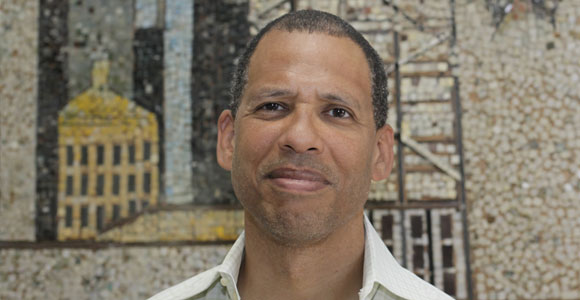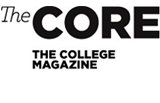
Office hours
Adam Green
A historian tells his own story.
Elizabeth Station
Before Adam Green, AB’85, was an associate professor of American history, he studied the subject in the College. Green, who earned his PhD from Yale in 1998, teaches popular courses on black Chicago and urban history and serves as master of the Social Sciences Collegiate Division.
Your father, Ernest Green, was one of the Little Rock Nine. What effect did his experience have on you?
Green: I remember seeing the Little Rock desegregation struggle in books and being very struck by the pictures of my father graduating or his schoolmates trying to get into the school. Those seemed like things that everybody would want to do. What it imparted to me, really, was a sense that history is made by engaging in a series of everyday actions, in ways that are familiar rather than remote.
Did you ever feel, as a kid, that you couldn’t complain about going to school?
Green: [Laughs] I think it gave me a sense of responsibility.
What was Chicago like when you were an undergrad?
Green: From the mid-1960s to mid-1980s, Chicago went through an extraordinary period— similar to cities like Detroit, New York, Los Angeles, and Baltimore—in which it lost 300,000 industrial jobs. That eviscerated the economic integration of the communities surrounding the University and severely stressed their social fabric.
When I was a student, there was a harder sense of perimeter around the campus, experienced variably depending on whether one was white or black. There was a presumption that one’s role was to stay within the four walls of the campus—as if there were walls. In 1983, when Harold Washington was elected mayor, for example, most students would have found it difficult to make their way to places where the campaign was based or even go downtown to celebrate his victory.
Would you say Chicago then was as segregated as the pre–civil rights South?
Green: I would say this professionally as a scholar: the northern style of segregation—utterly separating people away from each other—was in some ways psychologically worse than the Jim Crow South. As demeaning and denigrating as those experiences were, human contact took place in the South.
What was it like to come back and teach here?
Green: It was unconventional in the sense that some of the people who taught me are now my colleagues—Jan Goldstein, Neil Harris, who recently retired, Ted Cook, Ralph Lerner, AB’47, AM’49, PhD’53. It’s very different to be asked to come back and contribute to the place where you were in formation.
Do you feel like you understand College students better, having been one?
Green: I can recall what it’s like to be frustrated about the workload. But you can also aggrandize a sense that your experience is a stand-in for what students are thinking about today.
Are there any cultural expressions that students think are completely new, but you as a historian know have been around for a while?
Green: Young people encounter particular forms—dubstep or electronic dance music or small turns in sartorial style—and believe these only pertain to their condition and circumstance, to their particular sense of expansiveness or angst. That’s partly true, and the code is more elaborate now with people so able to exchange information through new technologies. But subculture is something that’s existed for a long time.
Has the relationship between the University and the city improved?
Green: There are still significant inequalities and disparities of resources between Hyde Park and the University. But the wall feels more like a gate, and the gate gets opened at different points.
